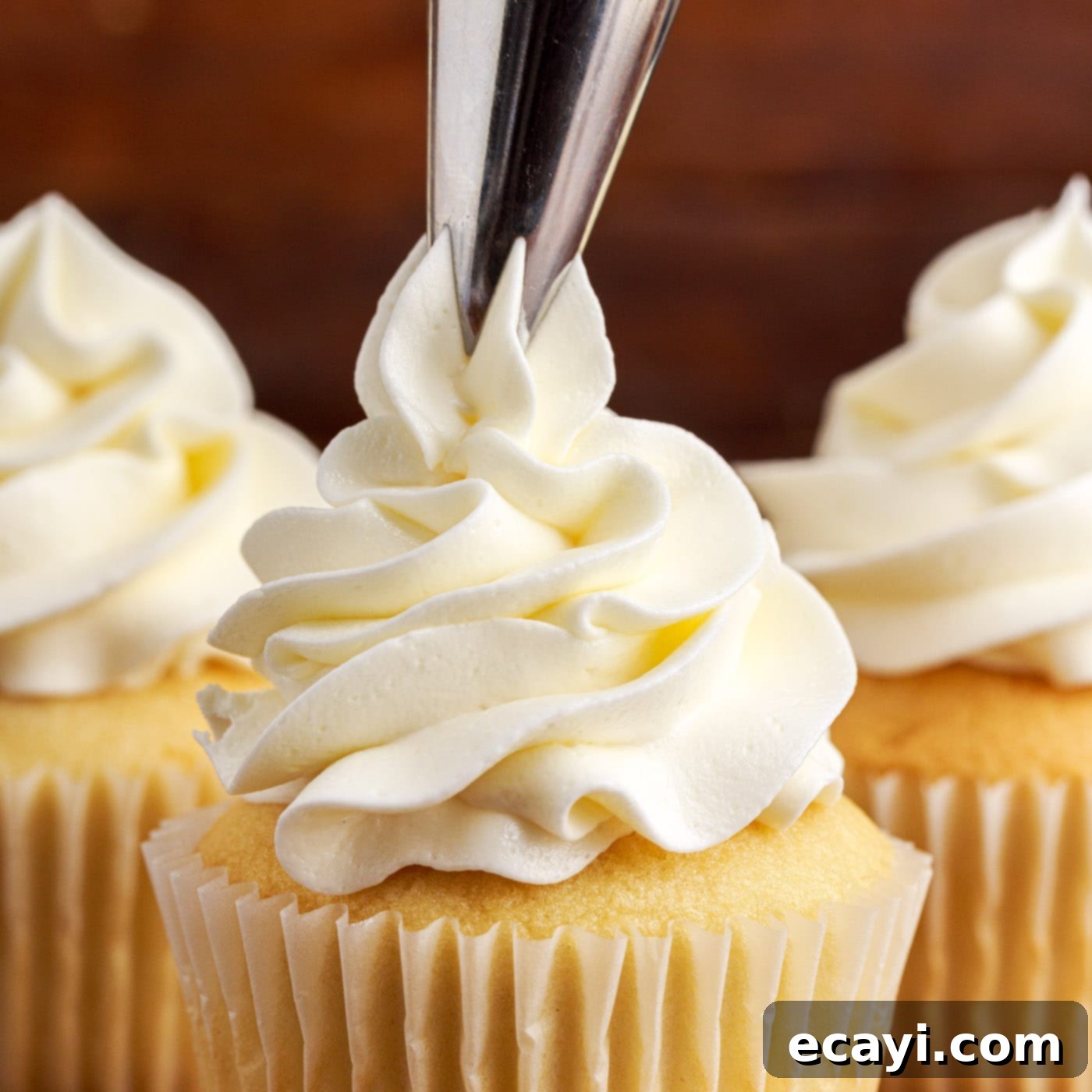The Ultimate Guide to Classic Vanilla Buttercream Frosting: Smooth, Fluffy, and Irresistible
There’s nothing quite like the silky smooth texture and rich, sweet flavor of homemade buttercream frosting. This classic vanilla buttercream recipe is incredibly easy to make with just four staple ingredients: butter, vanilla extract, powdered sugar, and heavy cream. In a matter of minutes, these simple components are whipped into a light, airy, and wonderfully pipeable frosting that truly elevates any dessert it touches. Whether you’re topping cupcakes, filling a layer cake, or simply craving a spoonful of pure indulgence, this recipe is your ticket to bakery-quality results right in your own kitchen.
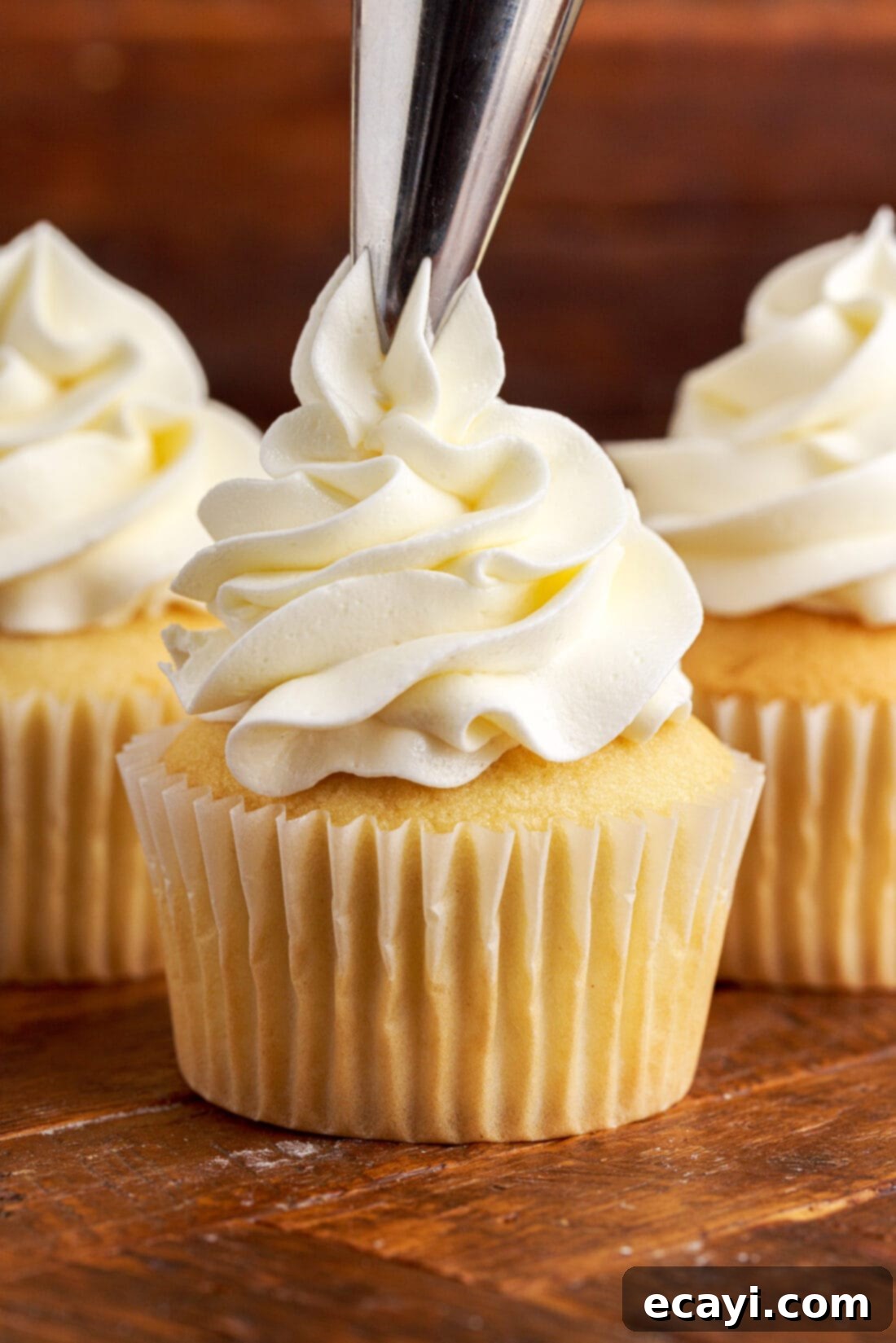
Why This Is Your Go-To Buttercream Recipe
This sweet vanilla buttercream frosting isn’t just a classic for its timeless taste; it’s a staple for any baker, from novice to expert, because it’s incredibly reliable and versatile. It’s an American-style buttercream, known for its buttery flavor and delightful sweetness, making it a crowd-pleaser for every occasion. This recipe truly works because it consistently delivers a frosting that is:
- Effortlessly Smooth & Fluffy: The carefully balanced ratio of butter, powdered sugar, and heavy cream, combined with proper whipping technique, ensures a velvety texture that spreads beautifully and pipes like a dream. No gritty sugar or heavy, dense frosting here!
- Quick to Prepare: With minimal ingredients and straightforward steps, you can whip up a batch of this delicious frosting in under 15 minutes. It’s perfect for last-minute dessert preparations or when you need a reliable frosting fast.
- Incredibly Versatile: Whether you’re decorating elaborate cakes, piping swirls onto cupcakes, filling delicate cookies, or even using it as a base for cake pops, this buttercream adapts to your needs. It holds its shape well for intricate designs yet remains soft enough to bite into.
- Customizable: While vanilla is a beloved classic, this base recipe is a blank canvas for endless flavor and color possibilities. You can easily add gel food coloring to match any party theme or swap out vanilla for other extracts (like almond or mint) to create unique flavor profiles. Looking for a rich chocolate option? Don’t miss our chocolate fudge frosting recipe!
- Economical & Accessible: Using common pantry ingredients means this homemade frosting is often more affordable than store-bought alternatives, without compromising on quality or taste.
Once you try this homemade vanilla buttercream, you’ll understand why it’s a staple in kitchens everywhere. It’s truly a recipe you can’t go wrong with.
Related Recipe – Craving another creamy frosting? Try our delightful Cream Cheese Frosting.
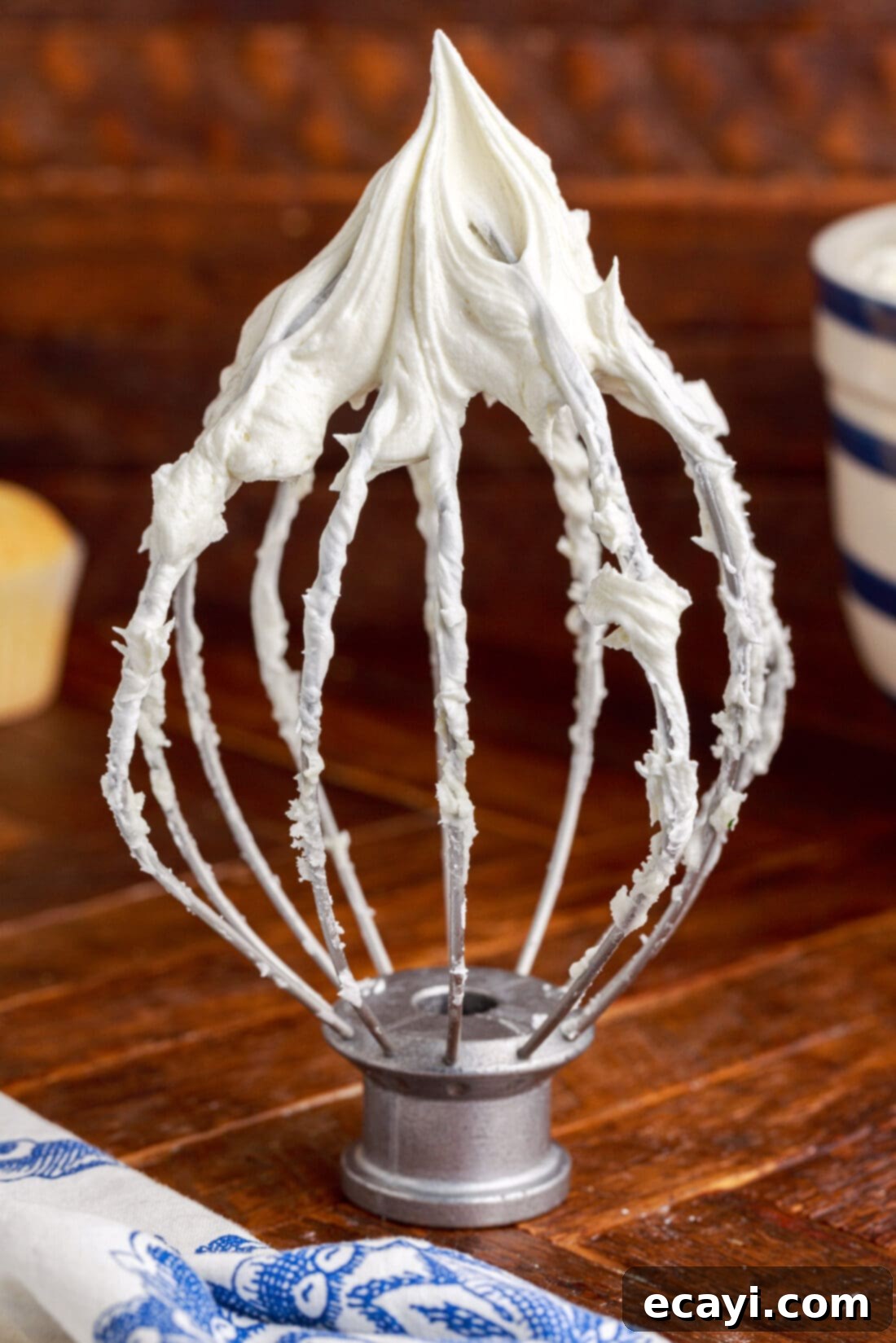
Essential Ingredients for Your Perfect Buttercream
Crafting this smooth and delicious buttercream requires just a few basic ingredients that are likely already in your kitchen. For precise measurements and detailed instructions, refer to the printable recipe card located at the end of this post.
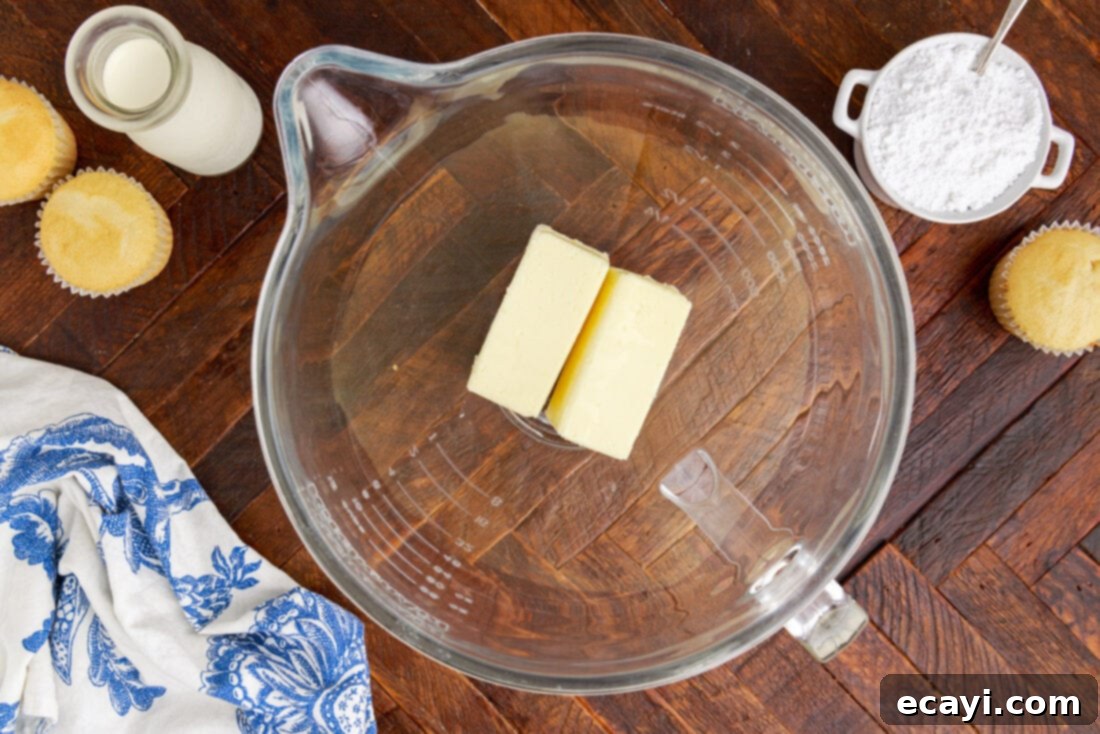
Ingredient Spotlight & Expert Substitution Tips
Understanding each ingredient’s role is key to mastering this buttercream. Here’s a closer look, along with helpful substitution suggestions:
BUTTER: We recommend using unsalted butter for this recipe. This allows you to control the overall sweetness and balance of your frosting. If you only have salted butter on hand, you can certainly use it; just omit any additional salt you might consider adding. The most crucial aspect of your butter is its temperature – it absolutely needs to be softened to room temperature. This means it should be pliable enough to leave an indentation when gently pressed, but not melted or greasy. To achieve this, simply slice your butter into cubes and let it sit on your kitchen counter for 30-45 minutes. Never microwave butter to soften it for frosting, as this can alter its fat structure, leading to a greasy or soupy buttercream that won’t whip up properly.
POWDERED SUGAR (Confectioners’ Sugar): This is the backbone of our buttercream, providing structure and sweetness. Powdered sugar is finely milled with a small amount of cornstarch, which helps prevent caking and gives the frosting its smooth texture. Unlike granulated sugar, it dissolves instantly into the butter, ensuring a non-gritty finish. For an extra silky frosting, some bakers opt to sift their powdered sugar before adding it, especially if it’s prone to clumps. While not always strictly necessary, it can make a noticeable difference in the final smoothness.
HEAVY CREAM: Heavy cream is what makes this buttercream light, fluffy, and incredibly smooth. When whipped, the fat in the cream emulsifies with the butter and sugar, creating that desirable airy consistency. The higher fat content of heavy cream (typically 36% or more) provides the best results for volume and stability.
Substitution Suggestion for Cream: While heavy cream is ideal, you can substitute it with whole milk, half-and-half, or even almond milk for a dairy-free option. However, be aware that these alternatives have a lower fat content and will result in a thinner consistency. You will likely need less liquid than the recipe calls for with heavy cream. When substituting with milk, add it gradually, 1 tablespoon at a time, and beat well after each addition until you reach your desired consistency. The frosting might not whip up as light and fluffy, and it may be slightly runnier or less stable for intricate piping, but it will still be delicious.
VANILLA EXTRACT: Vanilla extract is what gives this buttercream its classic, comforting flavor. For the best taste, use a high-quality pure vanilla extract.
Flavor Variations: This is where you can get creative! Feel free to experiment with other extracts like almond, lemon, peppermint, or even a touch of coffee extract for different flavor profiles. You can also add a pinch of salt to balance the sweetness and enhance the overall flavor, especially if using unsalted butter. For colorful frostings, gel food colorings are recommended as they provide vibrant hues without significantly altering the frosting’s consistency, unlike liquid food colorings.
Step-by-Step Guide to Perfect Buttercream Frosting
These step-by-step photos and detailed instructions are here to help you visualize how to make this recipe. For the complete printable version of this recipe, including all measurements and instructions, simply Jump to Recipe at the bottom of the page.
- Cream the Butter: In the bowl of a standing mixer fitted with the whisk attachment, beat the softened butter on medium-high speed until it becomes light, fluffy, and pale in color. This typically takes about 3-5 minutes. Proper creaming incorporates air into the butter, which is essential for a light and airy frosting. Make sure to scrape down the sides of the bowl occasionally to ensure even mixing.
- Incorporate Powdered Sugar: With the mixer on its lowest speed, gradually add the powdered sugar, one cup at a time. Mixing slowly at first will prevent a “sugar cloud” from forming in your kitchen. Once most of the sugar is incorporated, increase the speed to medium and continue beating until smooth. Scrape down the bowl thoroughly to ensure all ingredients are well combined.
- Add Vanilla Extract: Pour in the vanilla extract and beat on medium speed until it is fully incorporated and fragrant. This step infuses the frosting with its classic vanilla flavor.
- Achieve Desired Consistency with Heavy Cream: Begin by adding 2 tablespoons of heavy cream to the mixture. Increase the mixer speed to high and whisk vigorously. The frosting will start to transform, becoming lighter and smoother. Stop the mixer, scrape down the sides and bottom of the bowl, then add 1-2 more tablespoons of heavy cream as needed, beating continuously until your desired consistency is achieved. This usually takes about 3-5 minutes of high-speed beating. For a thicker frosting, use less cream; for a thinner, more spreadable frosting, add a bit more. The final result should be smooth, glossy, and able to hold its shape.
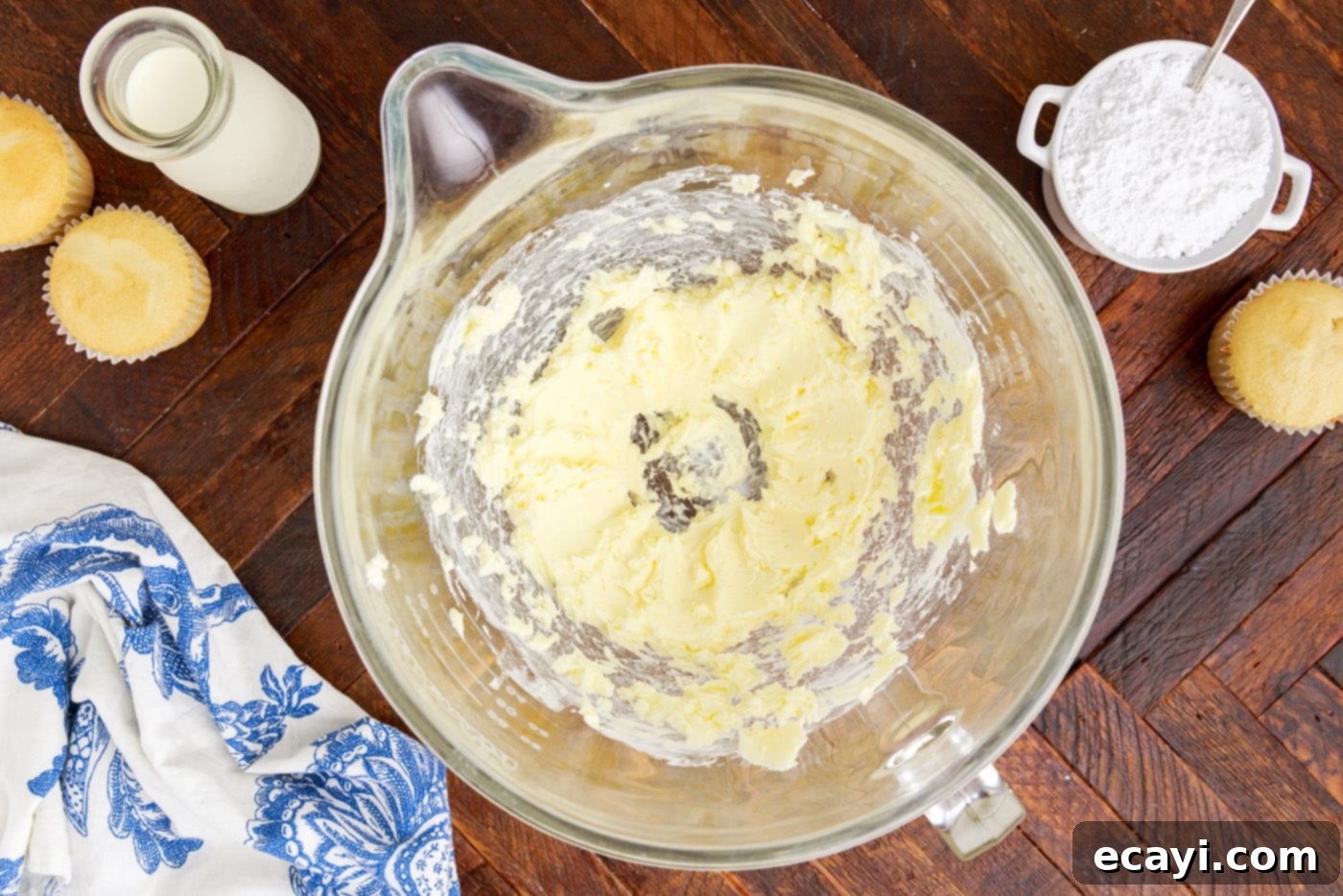
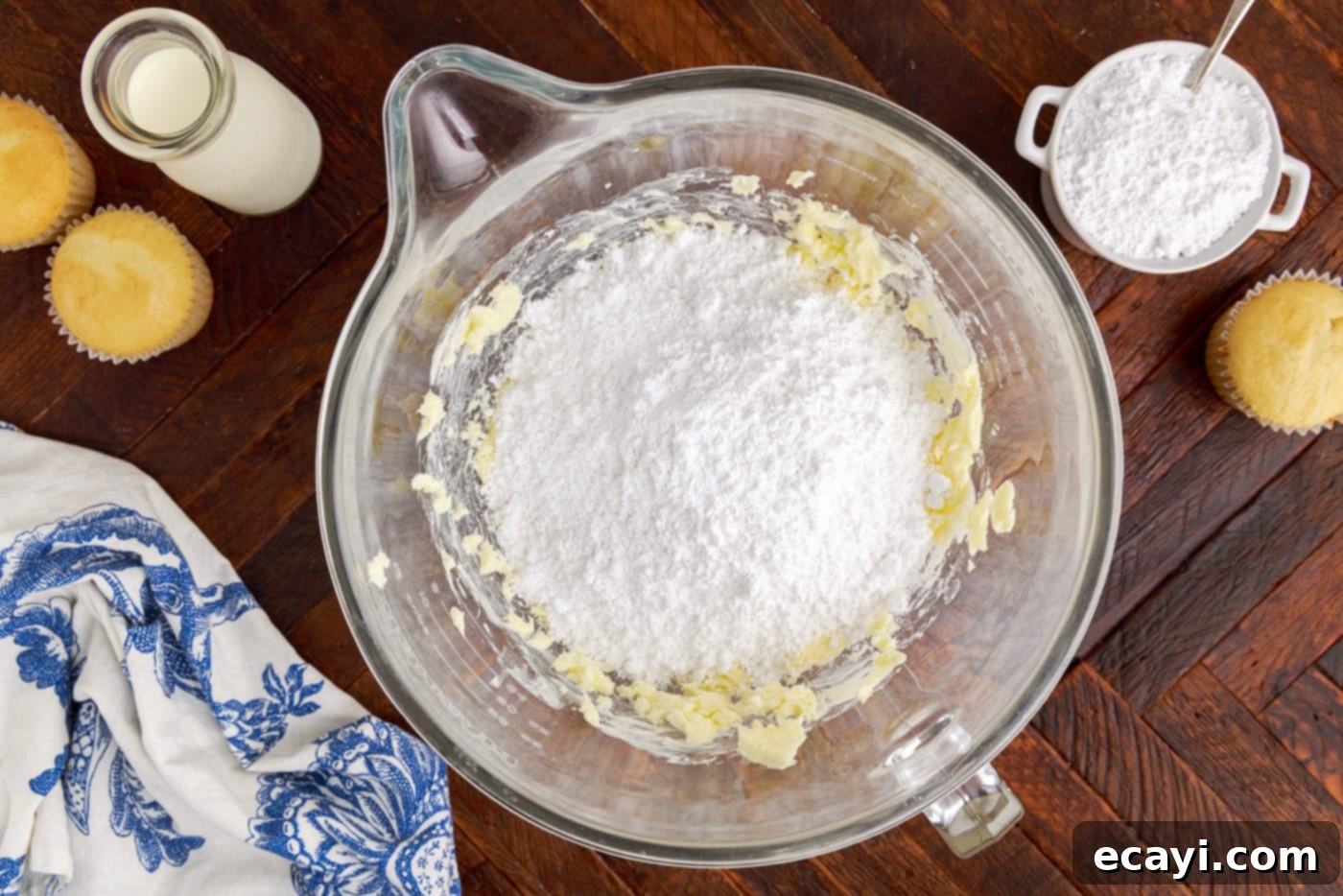
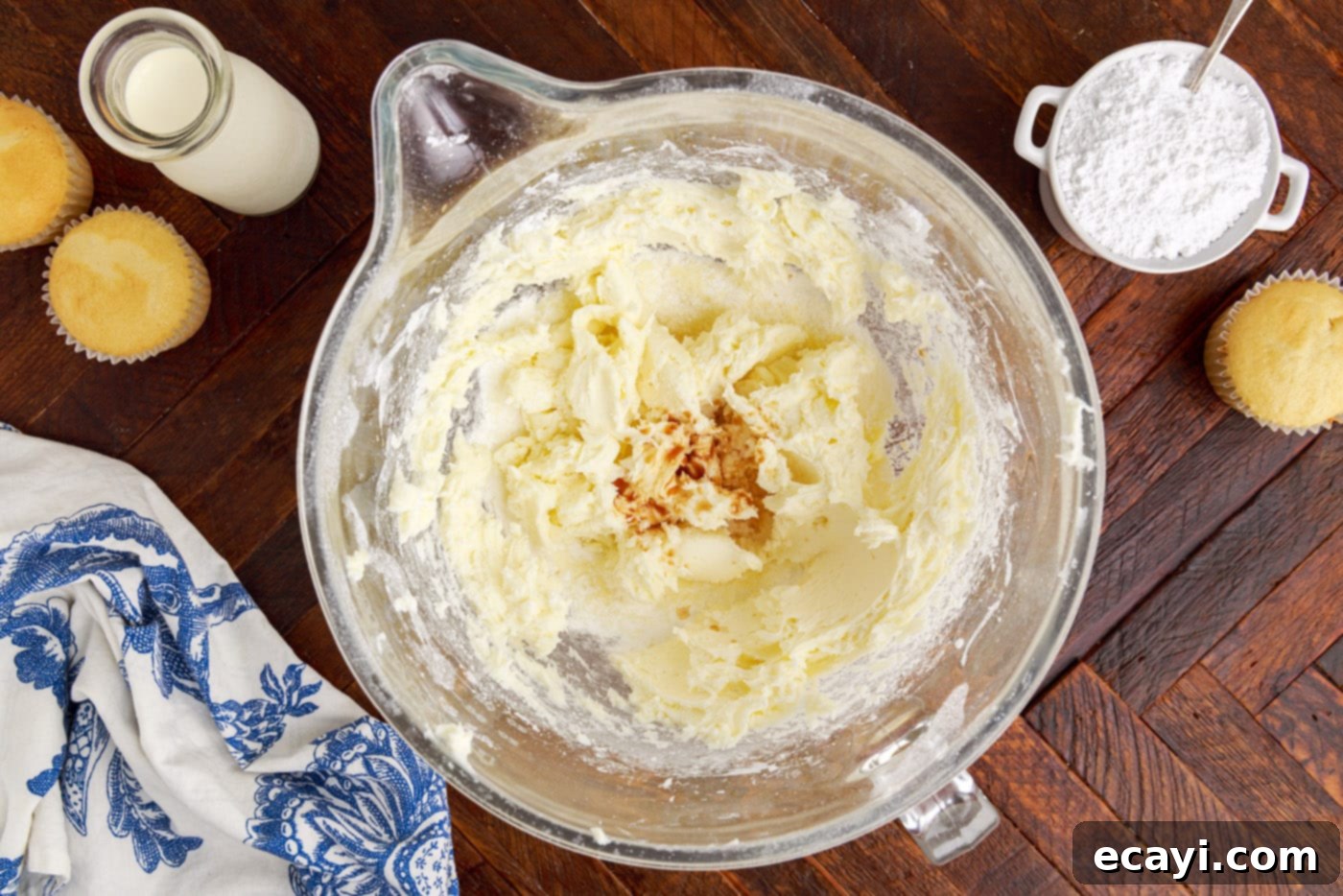
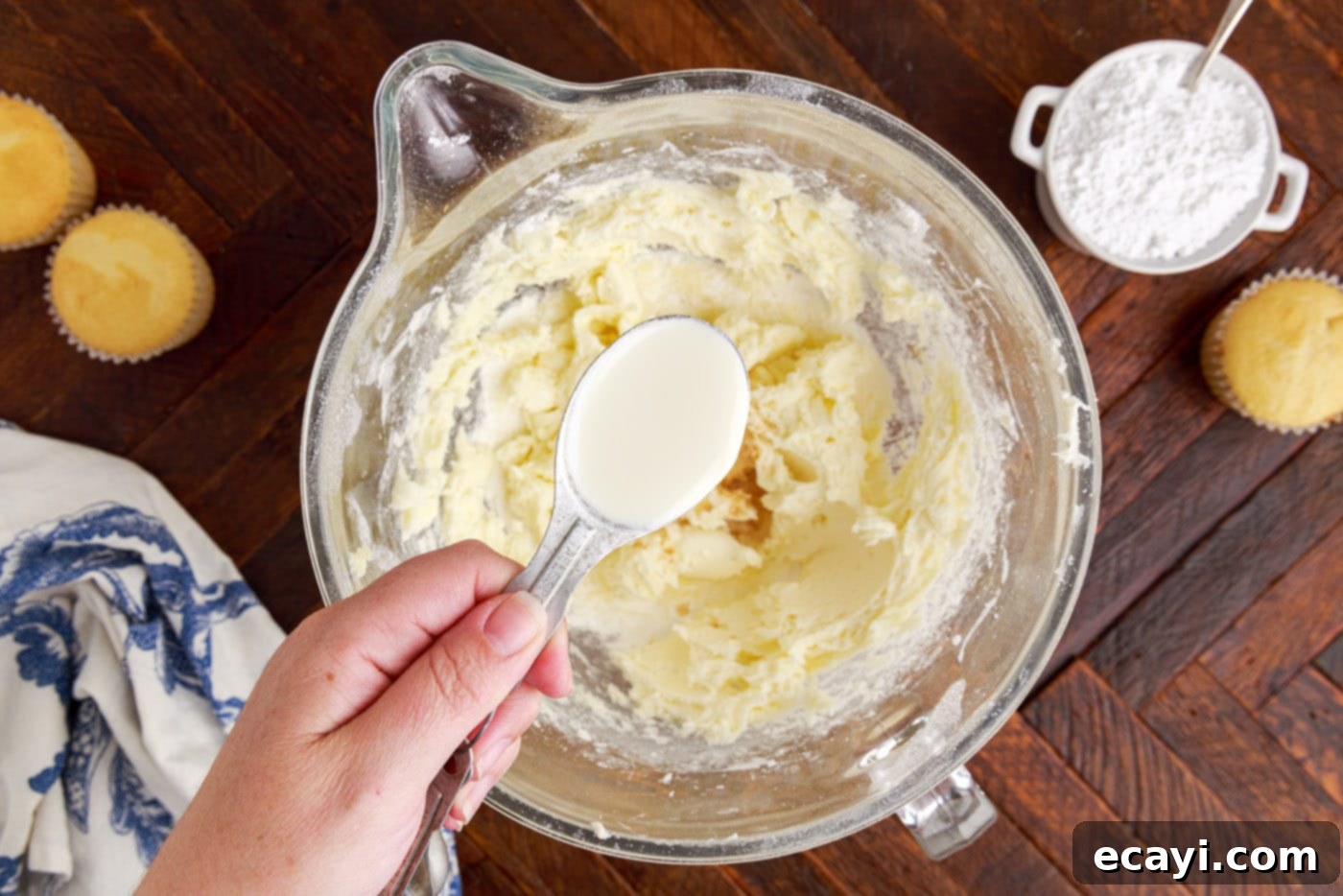
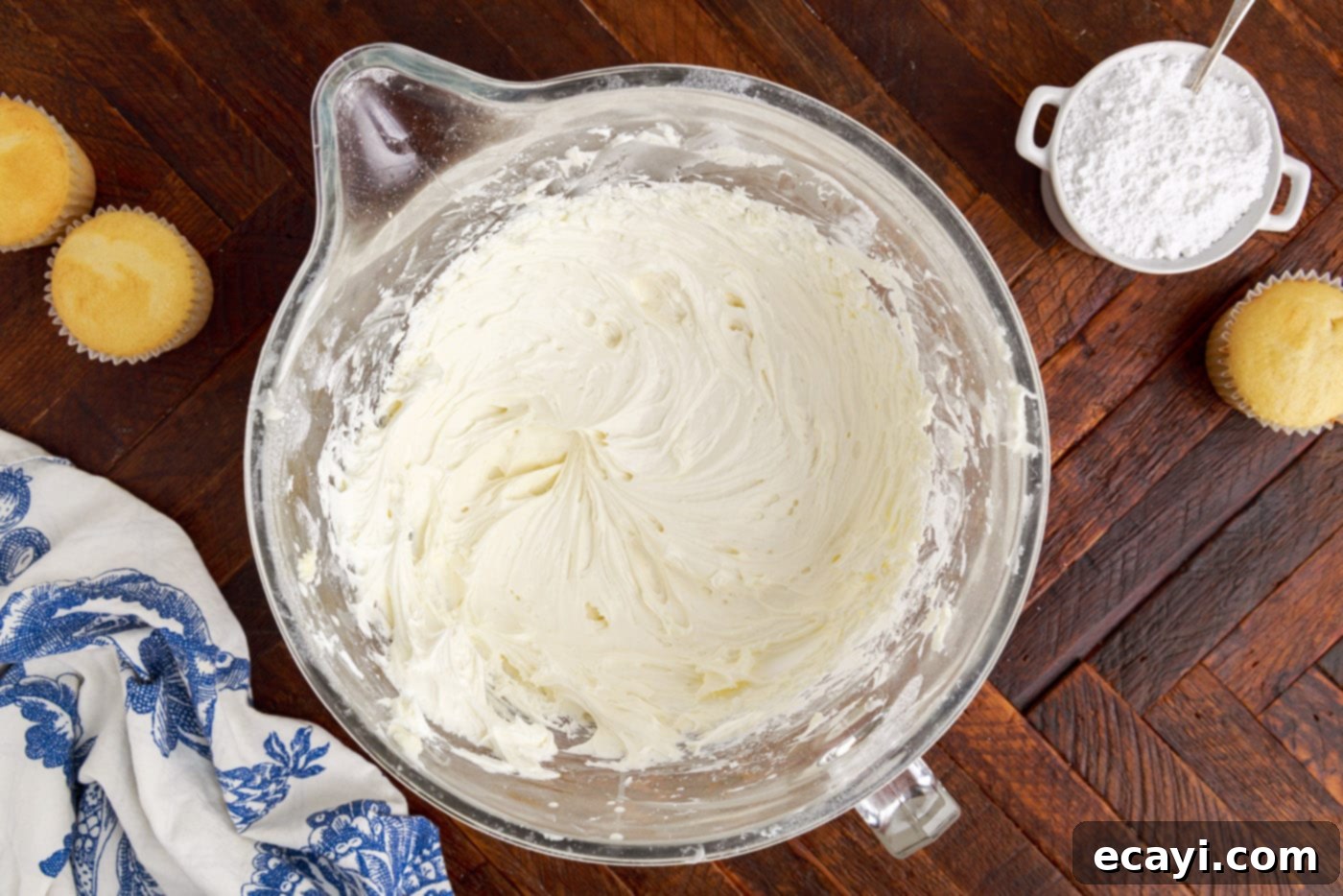
Frequently Asked Questions & Expert Tips for Buttercream Success
This recipe yields approximately 3 cups of buttercream frosting, which is sufficient to generously frost a 13×9 inch sheet cake, a standard 9-inch round layer cake, or about 24 cupcakes with a smooth, flat spread of frosting. If your intention is to pipe elaborate swirls or decorative designs onto cupcakes, we highly recommend doubling this recipe, as piping consumes a significantly larger amount of frosting compared to a simple spread. For a two-tiered 9-inch cake, a double batch will also be necessary. It’s always better to have a little extra frosting than to run short mid-decoration; any leftovers can be easily stored for future use!
Homemade buttercream frosting stores exceptionally well! When kept in an airtight container, it will remain fresh in the refrigerator for up to 2 weeks. For longer storage, you can freeze it for up to 3 months. When you’re ready to use it after storage, ensure you bring the buttercream back to room temperature. Then, transfer it to your stand mixer and re-beat it on medium-high speed for a few minutes until it regains its smooth, fluffy consistency. This re-whipping process is crucial for restoring its texture.
A grainy texture in buttercream is almost always due to undissolved powdered sugar. Ensure you use finely sifted powdered sugar. When adding it to the butter, do so gradually on low speed, then increase speed and beat thoroughly for several minutes. Scraping down the bowl frequently helps incorporate all the sugar. If it’s still grainy, continue beating for a few more minutes, or try adding a tiny bit more heavy cream (1/2 teaspoon at a time) to help dissolve the sugar further.
Adjusting consistency is common! If your buttercream is too thin, add more powdered sugar, a quarter cup at a time, beating well after each addition until it thickens. If it’s too thick, add more heavy cream (or milk if substituting), one teaspoon at a time, beating thoroughly after each addition until it reaches your desired spreadable or pipeable consistency. Remember, it’s easier to add more of an ingredient than to take it away, so proceed slowly.
This recipe is for American buttercream, which is the simplest and most common type. It’s made by creaming butter with powdered sugar, a liquid (like cream or milk), and flavoring. It’s known for its rich, sweet, and buttery taste. Other popular types include:
- Swiss Meringue Buttercream: Made by heating egg whites and sugar over a double boiler, then whipping into a meringue before adding butter. It’s lighter, less sweet, and very smooth.
- Italian Meringue Buttercream: Similar to Swiss, but hot sugar syrup is poured into whipping egg whites, then butter is added. It’s the most stable and least sweet of the meringue buttercreams.
- French Buttercream: Made with egg yolks instead of whites, resulting in a rich, custardy, and intensely buttery flavor.
- German Buttercream (Crème Mousseline): A pastry cream (custard) base is cooled, then whipped with butter. It’s rich, smooth, and less sweet than American buttercream.
Each type offers a unique flavor and texture, but American buttercream remains a favorite for its ease and deliciousness.
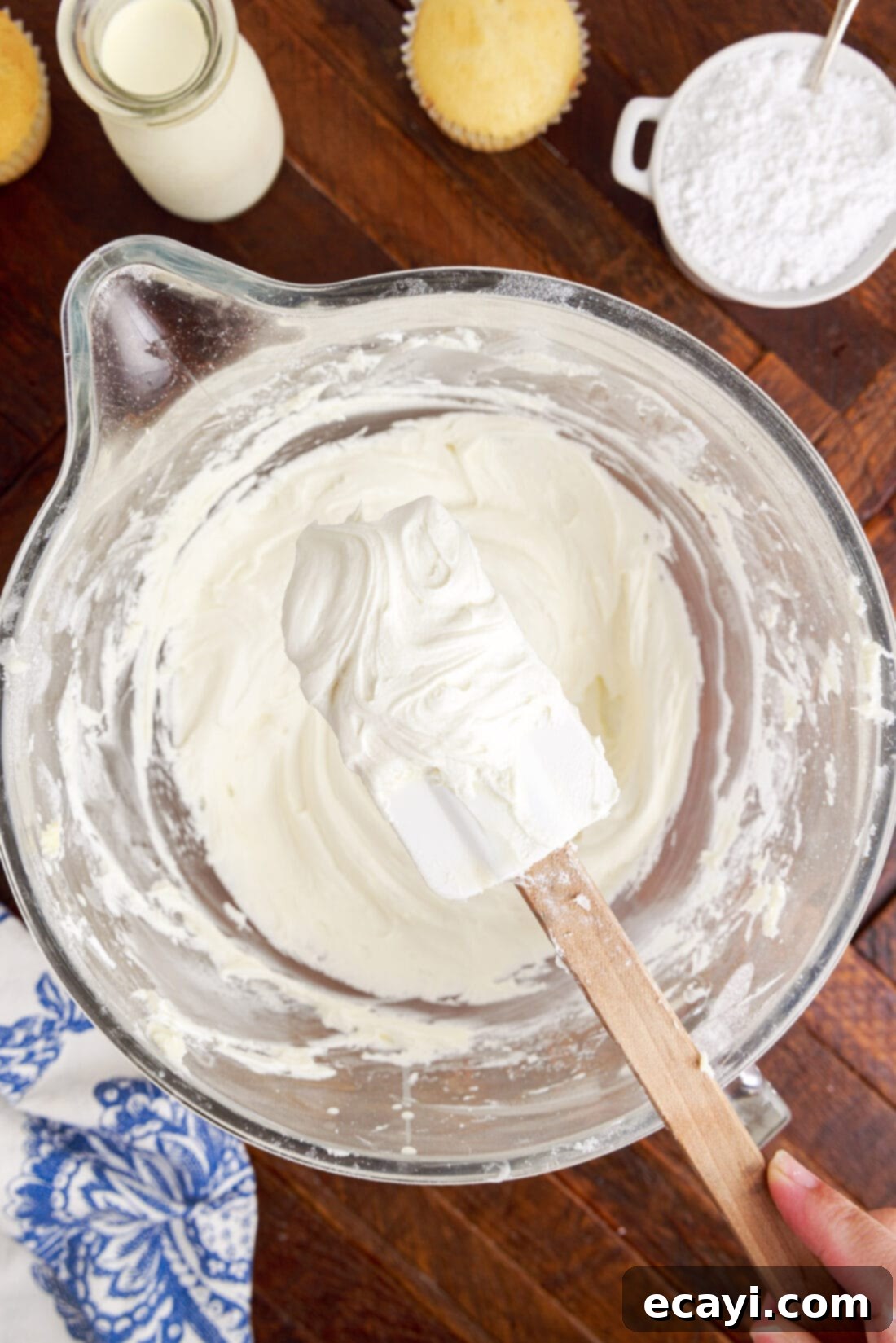
Creative Ways to Serve Your Vanilla Buttercream
The beauty of this classic buttercream frosting lies in its incredible versatility. Beyond simply slathering it on cakes, there are countless delicious ways to incorporate it into your sweet creations. Its smooth texture and delightful vanilla flavor make it the perfect accompaniment to a wide array of desserts:
- Frosting & Decorating: The most obvious, yet always satisfying. Use it to frost cupcakes, layer cakes, sheet cakes, brownies, and various types of cookies. Its stability makes it ideal for piping intricate designs, creating beautiful borders, or simply spreading a smooth, even layer.
- Filling: A sweet surprise awaits when you use this buttercream as a luscious filling for desserts like baked donuts, cream puffs, macarons, or even between cookie sandwiches. It adds a wonderful creamy texture and an extra burst of flavor.
- Drizzles & Glazes: For a lighter application, thin out any leftover buttercream with a touch of extra heavy whipping cream or milk. This creates a delightful drizzle or glaze that can be poured over bundt cakes, scones, muffins, or fruit tarts, adding a delicate sweetness.
- Cake Pops & Truffles: This buttercream acts as an excellent binder and flavor enhancer for cake balls or cake pops. Mix it with crumbled cake to create perfectly moist and flavorful treats.
- Dessert Topping: A dollop of buttercream can instantly elevate simple desserts like fresh fruit tarts, individual fruit crisps, or even a scoop of ice cream.
Don’t be afraid to experiment with different piping tips and techniques to add visual appeal to your desserts. From elegant rosettes to playful swirls, this buttercream is your canvas.
Delicious Desserts to Pair with Vanilla Buttercream Frosting
Looking for inspiration? Here are some fantastic recipes that are perfectly complemented by this homemade vanilla buttercream frosting:
- Cake Balls
- Fudge Brownies
- Classic White Cake
- American Flag Cupcakes
- Confetti Cake Mix Cookies
- Double Chocolate Cupcakes
- Baked Cake Donuts (perfect for filling the center or topping)
I love to bake and cook and share my kitchen experience with all of you! Remembering to come back each day can be tough, that’s why I offer a convenient newsletter every time a new recipe posts. Simply subscribe and start receiving your free daily recipes!
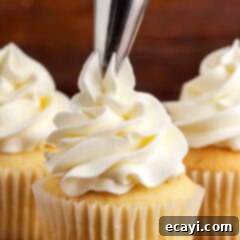
Classic Vanilla Buttercream Frosting
IMPORTANT – There are often Frequently Asked Questions within the blog post that you may find helpful. Simply scroll back up to read them!
Print It
Pin It
Rate It
Save ItSaved!
Ingredients
- 1 cup unsalted butter softened
- 1 teaspoon vanilla extract
- 4 cups powdered sugar
- 4 Tablespoons heavy whipping cream
Equipment You’ll Need
-
Stand mixer or hand mixer
-
Rubber spatula
Before You Begin: Important Tips for Success
- Butter Temperature is Key: Always use softened butter at room temperature. For best results, slice cold butter into cubes and let it rest on the counter for 30-45 minutes. Avoid microwaving, as this can lead to a greasy, unstable frosting.
- Cream Substitutions: While heavy cream provides the fluffiest, most stable frosting, you can use whole milk, regular milk, or even almond milk. If substituting, add the liquid gradually (1 tablespoon at a time) as you’ll likely need less than the 4 tablespoons called for with heavy cream. Be aware that milk will result in a slightly thinner consistency and a less stable frosting.
- Storage & Rejuvenation: Store leftover buttercream in an airtight container in the refrigerator for up to 2 weeks, or in the freezer for up to 3 months. To reuse, bring to room temperature and re-beat in your mixer until smooth and fluffy again.
- Tools for Texture: A whisk attachment on your stand mixer is ideal for creating a creamy, smooth, and airy buttercream. If your frosting has too much air or you desire a denser, more condensed texture, switch to the paddle attachment and beat on low speed for a few minutes.
- Flavor & Salt Balance: You can use salted butter, or add a small pinch of fine sea salt to unsalted butter to enhance the flavor and balance the sweetness.
- Yield Considerations: This recipe makes enough frosting for a 13×9 inch cake, a single 9-inch round cake, or approximately 24 cupcakes with a flat spread. If you plan on elaborate piping or decorating a two-tiered 9-inch cake, we recommend doubling the recipe to ensure you have plenty. Having a little extra is always better, and it freezes well!
Instructions
-
In the bowl of a standing mixer with the whisk attachment, beat the softened butter on medium-high speed until it becomes light, pale, and fluffy, about 3-5 minutes. Scrape down the bowl as needed.
-
Reduce mixer speed to low. Gradually add the powdered sugar, one cup at a time, to prevent a sugar cloud. Once combined, increase speed to medium and beat until smooth, scraping down the sides of the bowl.
-
Beat in the vanilla extract until fully incorporated.
-
Add 2 tablespoons of heavy cream and whisk on high speed. Scrape down the bowl, then add 1-2 more tablespoons of heavy cream, beating for about 3-5 minutes until the frosting is light, fluffy, and reaches your desired consistency.
Nutrition
The recipes on this blog are tested with a conventional gas oven and gas stovetop. It’s important to note that some ovens, especially as they age, can cook and bake inconsistently. Using an inexpensive oven thermometer can assure you that your oven is truly heating to the proper temperature. If you use a toaster oven or countertop oven, please keep in mind that they may not distribute heat the same as a conventional full sized oven and you may need to adjust your cooking/baking times. In the case of recipes made with a pressure cooker, air fryer, slow cooker, or other appliance, a link to the appliances we use is listed within each respective recipe. For baking recipes where measurements are given by weight, please note that results may not be the same if cups are used instead, and we can’t guarantee success with that method.
